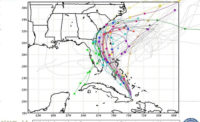Two years after a $742-million budget deficit forced project postponements and operational cutbacks, the North Carolina Dept. of Transportation has yet to fully rectify many of the financial management practices that contributed to the shortfall, according to a recent state audit. Although agency cash reserves have stabilized in recent months, the audit warned that the risk of another financial crisis remains unless additional changes are implemented.
Mandated by state law, the audit found that while NCDOT stayed within its annual Spending Plan during the first half of the 2021 fiscal year (July-December 2020), the plan had been based primarily on past years’ spending patterns, rather than the development of specific project and operations estimates. As a result, the audit said, NCDOT’s fiscal performance during the six-month period was “largely due to chance” rather than the “Department management’s planning and control.”
The audit also concluded that NCDOT has yet to address previously identified budgeting and oversight issues that contributed to the agency exceeding its 2019 spending targets by $742 million. Disaster response expenses and legal settlements related to a state law called the Map Act also factored into the deficit, leaving NCDOT with a cash crunch that forced the agency to delay payments to contractors, put hundreds of projects on hold and obtain a $220-million bailout from the state legislature.
Coming in for criticism was the Chief Engineer’s Office, which the audit found had left responsibility for spending plan monitoring and ensuring compliance to the agency’s 14 regional highway offices, resulting in inconsistencies in frequency, presentation and level of detail. Finance metrics dashboards, created to assist administrators and oversight bodies compare forecast and actual spending, also suffered from infrequent updates and inaccuracies.
“It calls into question how frequently and to what extent the dashboards were actually used for monitoring the Spending Plan,” the audit said.
As a result of these and other financial management shortcomings, the audit concluded, NCDOT “is still at risk for exceeding its Spending Plan in future periods.”
NCDOT officials agreed with the audit’s findings, but also stressed that the agency has made progress on several fronts. In addition to building a positive cash balance of nearly $2 billion as of mid-September 2021, the agency has expanded its use of forecasting and statistical modeling tools and established a uniform financial management personnel structure to oversee operating division spending. Preliminary engineering expenditures, previously tracked at the project level, are now required to be monitored at the division level.
The effectiveness of these and other measures will be gauged in the nest state audit, which will cover NCDOT’s performance during January-June 2021. Agency spokesperson Carly Olexik says the agency is “committed to making continued improvements to our process and how we do business.” She added that “NCDOT’s finances have stabilized and we continue to track below our spend plan.”
Coping With Cost Increases
Meanwhile a new challenge of NCDOT’s financial stability has emerged in the form of post-pandemic material and supply chain issues.
Steel is particularly challenging, costing twice as much as November 2020 “if you can get it,” observes Victor Barbour, director of government relations and the highway-heavy division for the Carolinas Associated General Contractors. Labor shortages have likewise limited contractors’ ability to take on and execute projects, with some firms operating at 75% capacity.
“Finding good labor is a real struggle,” Barbour says.
Concerns about future effects of spiraling prices on construction led North Carolina’s Board of Transportation to authorize NCDOT to take a fresh look at its 2024-2033 State Transportation Improvement Program (STIP).
“If we were to implement the STIP now, it would be overprogrammed,” says Joey Hopkins, NCDOT’s deputy Chief Engineer for planning. “Reviewing project scopes and revising estimates will help us make adjustments to keep it balanced.”
With more than a year before the new STIP is due to begin the federal review process, Hopkins says there’s sufficient time to gather public and industry input to optimize the plan. “There’s always the hope of additional funding, but we can’t count on that,” he adds.
Barbour says NCDOT is wise to invest time in refining project estimates, given the uncertainty as to if and where some material costs will top out. He also hopes the agency will consider measures to help ease financial pressures on contractors. One suggestion would be to add “float” to project start dates to give contractors time to source and price materials.
“That would help us find the best value, and ensure the materials are delivered and ready for the project to get underway,” he says.





Post a comment to this article
Report Abusive Comment